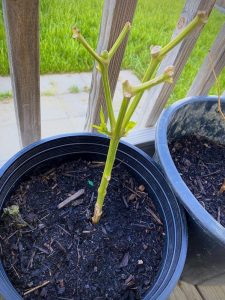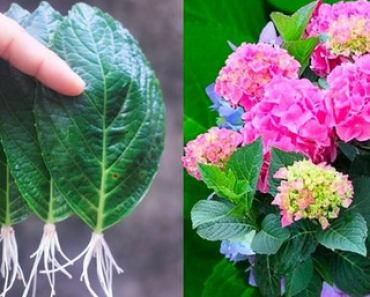
Overwintering Peppers: A Gardener’s Guide to Year-Round Harvests
Introduction:
Welcome to our gardening haven, where we turn seasonal gardening into a year-round joy! Did you know that peppers are perennials? Despite their aversion to cold temperatures—peppers can quickly die when exposed to temperatures below 50°F—you can pot them up and bring them indoors to go dormant during the winter. This method allows you to replant them in the spring and enjoy bigger and better plants for years to come. I’m thrilled to share that my purple bell pepper just woke up again and has started putting out new leaves!
Guide to Overwintering Pepper Plants
Preserve your beloved pepper plants and enhance your harvest each year with these detailed steps.
Ingredients Overview:
- Fresh, well-draining soil: Essential for preventing waterlogging and providing nutrients.
- Pots with good drainage: To avoid root rot and maintain healthy roots.
- Pruning shears: For clean cuts that help the plant conserve energy.
- Cool, dark indoor space: A basement or garage with stable temperatures around 60-70°F.
- Minimal water: To keep the plants alive without encouraging new growth during dormancy.
Step-by-Step Instructions
1. Transplanting:
- Timing: At the end of the growing season, before the first frost, carefully dig up your pepper plants.
- Preparation: Choose pots with excellent drainage and fill them with fresh, well-draining soil. This ensures that excess water can escape and the roots remain healthy.
- Transplanting: Gently transplant the pepper plants into these pots, ensuring the roots are well-covered and the plants are stable. Handle the roots carefully to minimize stress and damage.
2. Pruning:
- Leaf Removal: Remove all the leaves from the plant. This step helps the plant conserve energy during its dormancy period.
- Stem Trimming: Cut back the smaller stems, leaving only the main, clean stems. This pruning focuses the plant’s energy on surviving the winter and preparing for robust growth in spring.
3. Indoors Transition:
- Location: Bring the potted pepper plants indoors to a cool, dark place, such as a basement or garage, maintaining a temperature of around 60-70°F.
- Light Management: Keep them away from light to encourage dormancy. Light exposure can trigger unwanted growth, using up the plant’s stored energy.
- Watering: Lightly water the plants just once every two months. Overwatering can cause root rot, so minimal watering is crucial. Ensure the soil is only slightly moist, not wet.
4. Waking Up in Spring:
- Hardening Off: As spring approaches and the risk of frost diminishes, start waking the pepper plants up using the Hardening Off method. This involves gradually exposing them to increasing amounts of sunlight and outdoor conditions to acclimate them.
- Gradual Exposure: Initially, place the plants in a shaded, sheltered spot for a few hours each day, gradually increasing their time outside over a couple of weeks. This gradual exposure helps the plants adjust without shock.
- Temperature Monitoring: Bring them back inside if temperatures drop below 55°F at night. Protecting them from late frosts is essential for their health.
5. Replanting:
- Outdoor Transition: Once nighttime temperatures are consistently above 55°F, it’s safe to plant your peppers back in the ground or move the pots to a sunny, outdoor location.
- Soil Requirements: Ensure they are planted in well-drained soil with plenty of sunlight. Good soil drainage and sunlight are critical for healthy growth.
- Spacing: When replanting in the ground, make sure to space the plants adequately to allow for good air circulation and prevent fungal diseases.
Additional Tips
- Monitoring: Keep an eye on your pepper plants during their dormant period. Check for signs of pests or disease and address any issues promptly to ensure they wake up healthy in spring.
- Fertilizing: When you start the hardening off process in spring, consider using a balanced fertilizer to give your plants a nutrient boost as they begin to grow again. This helps support new growth and prepares the plants for a productive season.
- Spacing: Adequate spacing when replanting ensures good air circulation, which helps prevent fungal diseases and promotes overall plant health.
By following these steps, you can successfully overwinter your pepper plants and enjoy a bountiful harvest year after year. Happy gardening!
Frequently Asked Questions
Q1: Can all pepper varieties be overwintered?
- A: Most pepper varieties can be overwintered, but some are more suited to this process than others. Bell peppers, jalapeños, and many hot pepper varieties do well with overwintering.
Q2: How do I know if my plant is in dormancy?
- A: A dormant pepper plant will have no leaves and will not show signs of new growth. The stems should remain firm and green, indicating the plant is alive and conserving energy.
Q3: What if my pepper plant starts growing during dormancy?
- A: If your pepper plant starts growing, it might be getting too much light or warmth. Move it to a cooler, darker location and reduce watering frequency to encourage dormancy.
Q4: Can I prune my pepper plants in spring instead of fall?
- A: Pruning in fall before dormancy helps the plant conserve energy over winter. Spring pruning can be done to remove any dead or damaged growth, but the major pruning should be done in fall.
Q5: How do I prevent pests during the indoor transition?
- A: Inspect your plants thoroughly before bringing them indoors. Remove any visible pests and consider using a natural pesticide if needed. Keeping the plants in a cool, dark place also helps minimize pest activity.
By following these tips and guidelines, you’ll be well on your way to maintaining healthy, productive pepper plants year after year. Happy gardening, and may your peppers flourish with every passing season

